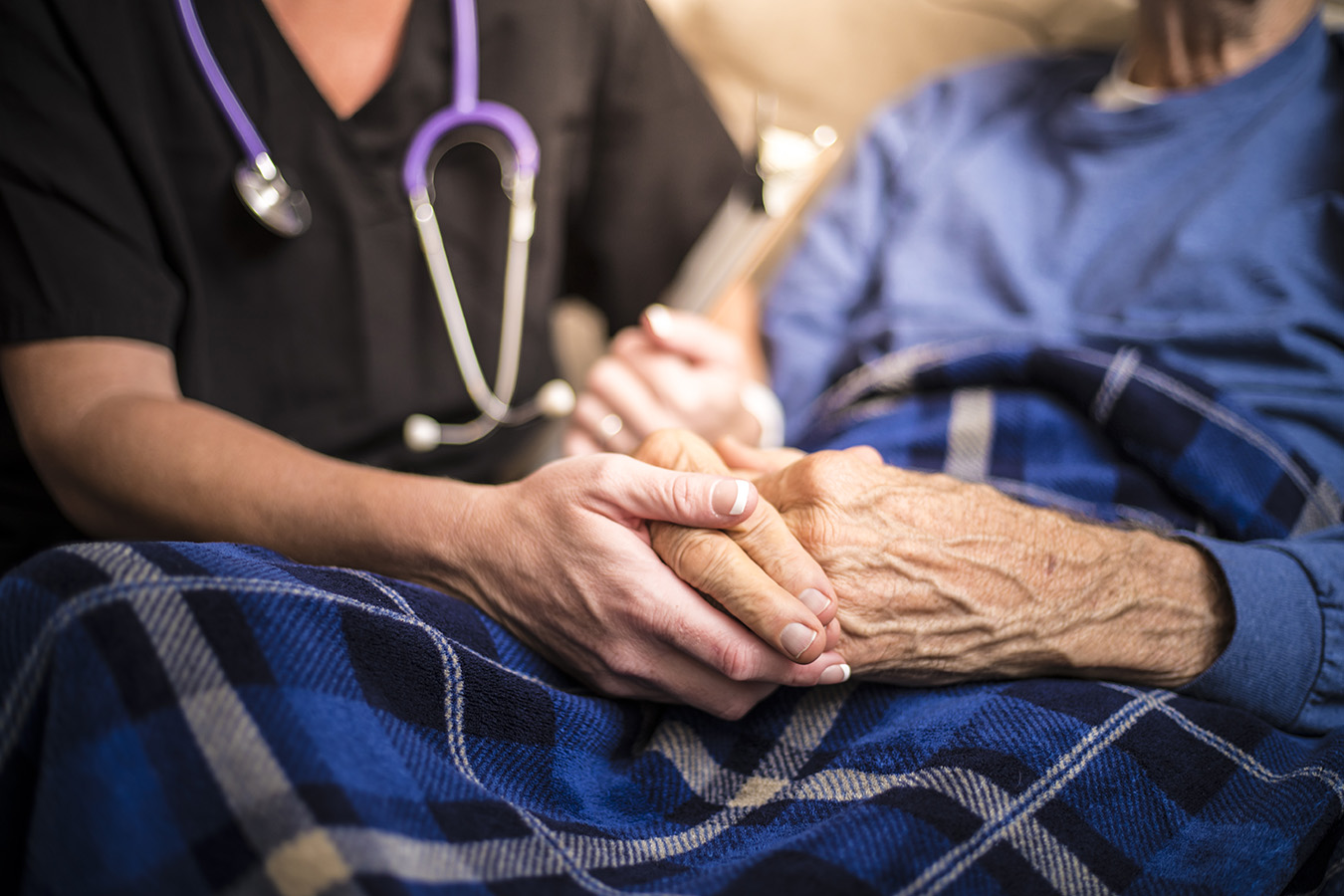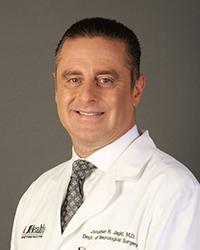DBS for Parkinson’s Disease Can Be Life-Changing

Parkinson’s disease is a movement disorder that has long confounded neurologists.
It usually begins with tremors and stiffness, but it can progress in such an inexorable way that it ravages a patient’s physical and mental health. There is no known cure, but treatments manage the condition with varying degrees of success.
One of the most promising treatments is Deep Brain Stimulation (DBS). At the University of Miami Health System’s Movement Disorders Center, DBS provides relief at a critical time in a patient’s life.
“It offers hope and a path forward for the quality of life when a patient starts running out of options,” says Jonathan R. Jagid, M.D., director of Functional Neurosurgery and surgical director of the Deep Brain Stimulation Program at the University of Miami Health System.
DBS has been around for more than 20 years.
DBS helps with the physical symptoms of Parkinson’s but doesn’t address the mood manifestations, such as hallucination, depression, sleep disorders, and cognitive impairment.
The procedure is typically recommended when the effectiveness of medications, the first line of treatment, begins to taper off or when the side effects from those drugs lead to complications.
“Initial therapy [for Parkinson’s] is medications,” Dr. Jagid adds, “and they can work great for a while. But about 50% of the patients begin to have problems at five years into their disease.”
Enter DBS, a two-stage procedure.
In the first step, neurosurgeons place electrodes in the brain, with 3D imaging and advanced medical software helping to determine the best placement. A patient remains awake during the process, and the neurosurgeon may ask the person to move their arms or legs to aid in guiding the implantation. For those that are absolutely too anxious to be awake for the procedure, the team offers the surgery with general anesthesia.
The second step involves placing an impulse generator battery under the collarbone or into the abdomen to provide the electrical charges to the electrodes in the brain.
This procedure is done under general anesthesia. The neurologist can then manage the stimulation via remote control as needed.
“It’s like a pacemaker for the brain,” Dr. Jagid says.
“It’s fooling the brain into thinking that dopamine is present.” Dopamine is a brain chemical, or neurotransmitter, that helps move electrical signals through the brain.
People with Parkinson’s have low levels of this chemical. Though it’s not clear why this happens, the lower the level of dopamine, the more symptoms of the disorder a patient will experience.
Risks are minimal with the DBS procedure, Dr. Jagid adds, and the effects can be almost immediate.
However, it usually takes two to four months to optimize the delivery of the electrical charges to the brain.
More recently, neurosurgeons at the Movement Disorders Center have used a DBS device that can be adjusted remotely from the doctor’s office by using encrypted video signals and a Bluetooth connection to the patient’s smartphone.
While the DBS procedure can be performed at various centers around the state, UHealth’s Movement Disorders Center leads the way with a comprehensive research program and the longest-running clinical operation in South Florida.
The center’s multidisciplinary team has participated in more than 1,100 implants.
What’s more, as a National Parkinson’s Foundation Center of Excellence, UHealth physician-scientists conduct clinical trials on new devices for the three DBS manufacturers, Abbott, Boston Scientific, and Medtronic.
DBS is also used to treat other movement disorders, including Tourette Syndrome and dystonia (involuntary muscle contractions that cause repetitive or twisting movements).
UHealth DBS experts have also worked with the Department of Psychiatry and Behavioral Sciences to treat obsessive-compulsive disorders. Dr. Jagid has joined forces with the Miami Project to Cure Paralysis to implant DBS devices to help patients with spinal cord injuries.
While some DBS patients may still require medication to control their symptoms, daily intake of these drugs — and their side effects — can be reduced by as much as 50%, Dr. Jagid says.
What’s more, while medications can wear off, increasing a patient’s symptoms between doses, DBS treats these symptoms constantly, preventing fluctuations.

Ana Veciana-Suarez, Guest Columnist
Ana is a regular contributor to the University of Miami Health System. She is a renowned journalist and author who has worked at The Miami Herald, The Miami News, and The Palm Beach Post. Visit her website at anavecianasuarez.com or follow @AnaVeciana on Twitter.
Last reviewed in November 2023, by Jonathan Russell Jagid, M.D., a neurosurgeon with the University of Miami Health System.

Originally published on: January 05, 2022
Tags: deep brain stimulation, Dr. Jonathan Jagid, Parkinson’s disease
